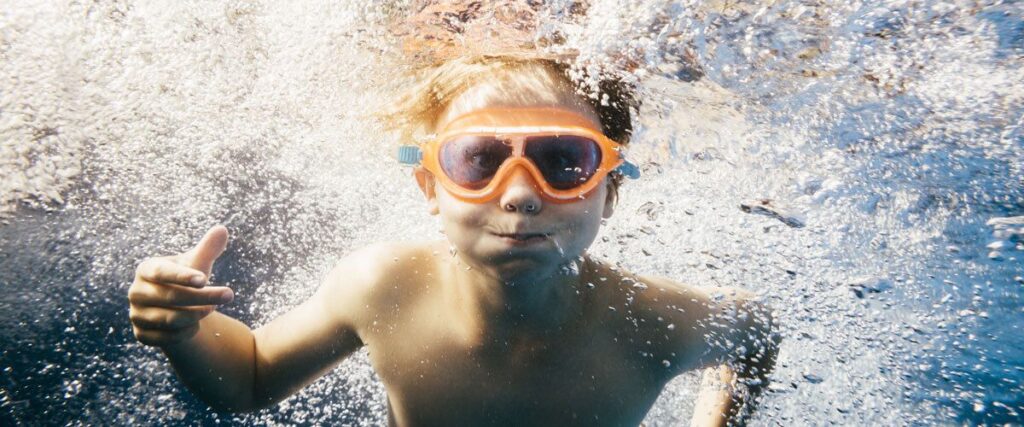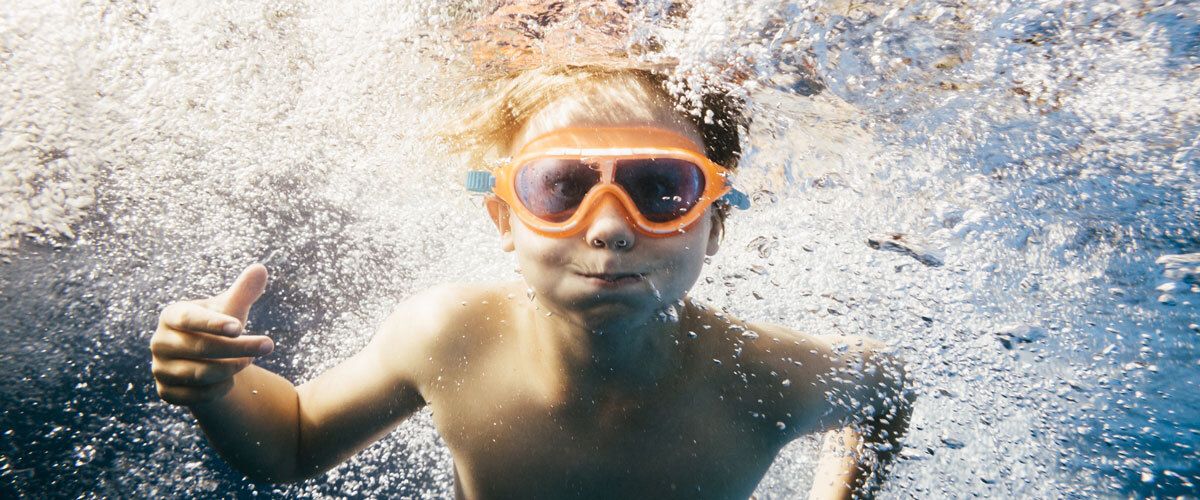
What Happens If You Hold Your Breath: Understanding the Risks and Physiological Effects
Holding your breath is something we all do, whether consciously or unconsciously. From swimming underwater to simply testing your limits, the act of voluntarily ceasing respiration can seem innocuous. However, understanding what happens if you hold your breath for extended periods is crucial for appreciating the body’s complex physiological responses and potential risks. This article delves into the science behind breath-holding, exploring the mechanisms that govern our urge to breathe, the immediate and long-term effects on the body, and the limitations of human breath-holding capabilities.
The Physiology of Breath-Holding: What Triggers the Urge to Breathe?
The urge to breathe is not primarily driven by a lack of oxygen (O2) in the body, but rather by an increase in carbon dioxide (CO2) levels in the blood. Our respiratory system is finely tuned to maintain a delicate balance between O2 and CO2. When we breathe, we inhale oxygen, which is transported to our cells to fuel metabolic processes. A byproduct of these processes is carbon dioxide, which is then carried back to the lungs to be exhaled.
When you hold your breath, CO2 levels in your blood begin to rise. Specialized chemoreceptors located in the brainstem and major arteries detect this increase and send signals to the respiratory center in the brain. This center, in turn, stimulates the diaphragm and other respiratory muscles to contract, creating the sensation of needing to breathe. Initially, these signals are mild, but they become increasingly intense as CO2 levels continue to climb. Therefore, the discomfort you feel when holding your breath isn’t solely about the absence of oxygen; it’s largely about the buildup of carbon dioxide.
The Initial Response: The Body’s Conservation Mechanisms
The body initiates several physiological responses when you hold your breath. These responses are aimed at conserving oxygen and minimizing the impact of reduced respiration. One of the primary mechanisms is the diving reflex, which is more pronounced in aquatic mammals but also present in humans. The diving reflex involves:
- Bradycardia: A slowing of the heart rate. This reduces the body’s overall oxygen demand.
- Peripheral Vasoconstriction: Constriction of blood vessels in the extremities (arms, legs, etc.). This redirects blood flow to vital organs like the brain and heart, ensuring they receive adequate oxygen supply.
- Splenic Contraction: The spleen, which stores red blood cells, contracts and releases these cells into the bloodstream. This increases the oxygen-carrying capacity of the blood.
These mechanisms help extend the amount of time you can safely hold your breath, but they are not limitless. As CO2 continues to accumulate and oxygen levels decline, more significant physiological changes occur.
Short-Term Effects of Holding Your Breath
The immediate consequences of holding your breath depend on the duration and individual factors such as fitness level, lung capacity, and overall health. In general, the following effects can be observed:
- Increased Heart Rate Variability: While the diving reflex initially slows the heart rate, as the urge to breathe intensifies, the heart rate can fluctuate more erratically.
- Elevated Blood Pressure: The constriction of blood vessels contributes to an increase in blood pressure.
- Muscle Contractions: As the respiratory center sends stronger signals to the respiratory muscles, involuntary contractions of the diaphragm and other muscles may occur. These contractions can feel uncomfortable and make it difficult to maintain the breath-hold.
- Discomfort and Anxiety: The rising CO2 levels and declining oxygen levels can lead to feelings of discomfort, anxiety, and even panic.
For most healthy individuals, holding your breath for a short period (e.g., while swimming underwater for a brief distance) poses minimal risk. However, pushing the limits can lead to more serious consequences.
Potential Risks of Prolonged Breath-Holding
Holding your breath for an extended period, especially without proper training and supervision, can be dangerous and even life-threatening. The primary risks include:
Hypoxia and Loss of Consciousness
Hypoxia refers to a condition in which the body’s tissues are deprived of adequate oxygen. When you hold your breath for too long, oxygen levels in the blood can drop to dangerously low levels, leading to hypoxia. This can cause a range of symptoms, including dizziness, confusion, impaired judgment, and ultimately, loss of consciousness. In aquatic environments, this is particularly hazardous because it can lead to drowning. This is also referred to as shallow water blackout. Shallow water blackout, a risk associated with holding your breath, occurs when a swimmer loses consciousness underwater due to oxygen deprivation, often after hyperventilating to extend breath-holding time.
Cerebral Edema
In extreme cases of prolonged breath-holding, hypoxia can lead to cerebral edema, which is swelling of the brain. This can cause severe neurological damage and even death. The brain is highly sensitive to oxygen deprivation, and even a brief period of hypoxia can have lasting consequences.
Arrhythmias and Cardiac Arrest
The physiological stress associated with prolonged breath-holding can trigger abnormal heart rhythms (arrhythmias) in some individuals. In rare cases, these arrhythmias can lead to cardiac arrest, which is a sudden cessation of heart function. People with pre-existing heart conditions are at higher risk of experiencing these complications.
Pulmonary Edema
Pulmonary edema, or fluid accumulation in the lungs, is another potential risk of prolonged breath-holding, particularly in the context of freediving. The exact mechanisms are not fully understood, but it may be related to the increased pressure in the pulmonary capillaries during breath-holding and the subsequent release of fluid into the alveoli.
Factors Influencing Breath-Holding Capacity
Several factors can influence how long a person can safely hold their breath. These include:
- Lung Capacity: Individuals with larger lung capacities generally have a greater reserve of oxygen, allowing them to hold their breath for longer.
- Fitness Level: Regular exercise and cardiovascular conditioning can improve the body’s efficiency in utilizing oxygen, which can extend breath-holding time.
- Training and Technique: Freedivers and other athletes who regularly practice breath-holding techniques can significantly increase their breath-holding capacity. These techniques often involve controlled breathing exercises, relaxation techniques, and mental preparation.
- Age: Lung capacity and cardiovascular function tend to decline with age, which can reduce breath-holding capacity.
- Health Conditions: Certain health conditions, such as asthma, heart disease, and lung disease, can impair respiratory function and reduce breath-holding capacity.
The Limits of Human Breath-Holding
While the human body has remarkable adaptive capabilities, there are inherent limits to how long we can safely hold our breath. The current world record for static apnea (holding your breath underwater without moving) is over 11 minutes. However, this is achieved by highly trained individuals under controlled conditions. Attempting to replicate such feats without proper training and supervision is extremely dangerous.
For most people, the urge to breathe becomes overwhelming after a few minutes. Ignoring this urge and continuing to hold your breath can lead to serious consequences, including loss of consciousness and death. It’s crucial to respect the body’s signals and avoid pushing the limits of breath-holding beyond what is safe and comfortable.
Safe Practices for Breath-Holding
If you are interested in exploring breath-holding techniques, it’s essential to do so safely and responsibly. Here are some guidelines to follow:
- Seek Professional Training: Enroll in a freediving course or work with a qualified instructor who can teach you proper breathing techniques, safety procedures, and rescue protocols.
- Never Breath-Hold Alone: Always have a buddy present who can monitor you and provide assistance if needed.
- Avoid Hyperventilation: Hyperventilating before holding your breath can artificially lower CO2 levels, which can delay the urge to breathe and increase the risk of shallow water blackout.
- Listen to Your Body: Pay attention to your body’s signals and stop holding your breath if you feel uncomfortable or dizzy.
- Be Aware of Your Limits: Don’t try to push yourself beyond your capabilities. Gradually increase your breath-holding time as you become more comfortable and confident.
Conclusion: Understanding the Balance
Holding your breath is a complex physiological process with potential benefits and risks. While brief breath-holding is generally harmless, prolonged breath-holding can lead to serious health consequences. Understanding the body’s response to breath-holding, the factors that influence breath-holding capacity, and the importance of safe practices is crucial for appreciating the limitations and potential dangers associated with this activity. Always prioritize safety and seek professional guidance when exploring breath-holding techniques.
Ultimately, knowing what happens if you hold your breath allows for a safer and more informed approach to activities involving breath-holding, whether it’s swimming, freediving, or simply understanding the intricacies of human physiology. Remember to always prioritize safety and respect the limits of your body.
[See also: The Science of Freediving]
[See also: Dangers of Shallow Water Blackout]
[See also: How to Improve Your Lung Capacity]

